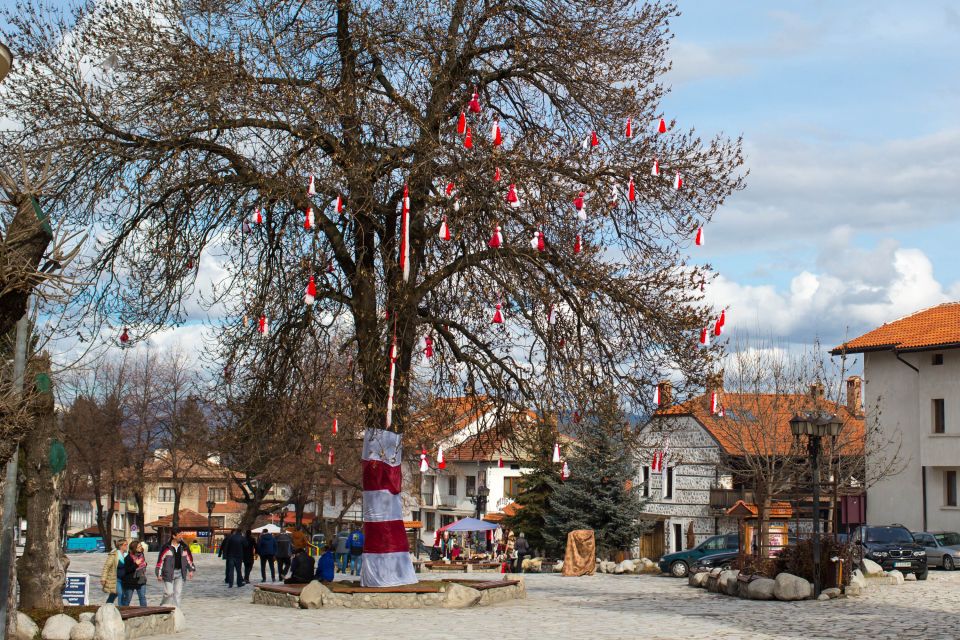
The different areas of Bulgaria offer a different vision of that tradition – according to another one people should leave their Martenitsas under large stones only to return nine days later and see what they would find underneath it – if they found ants that meant the year would be rich in sheep, if they found larger bugs, then they would have more cows that year. Once the owners of the Martenitsa have seen the first stork – the symbol of the spring, they must take their Martenitsa off and hang it on a blooming tree. Generally, the Martenitsa is believed to preserve the person wearing it from any bad luck or illnesses. The bachelors were supposed to wear the Martenitsas with their ends spread, while the elderly ones – on the contrary, should make sure their Martenitsas are well and neatly arranged, so that they wouldn’t fly around during partying. The married women should place their Martenitsas on the right side of their chests, the single ones – on the left. The Martenitsa must be twisted in the same way as young unmarried women “twist around” the bachelors. The women were supposed to twist white and red threads together, thus producing Martenitsas, which they later gave to all members of the family to wear. When Baba Martha, symbolizing the spring month of March, would see them she would start laughing and that way make the Sun shine bright again. In the morning of March 1st the housewives used to hang out red aprons, belts, rugs or twisted threads in front of their houses as protection against illnesses and poverty. March 1st is the name day of everyone named Martha, Martin, Martina. The wearing of a Martenitsa used to be a kind of a magical ritual act: the twisted white and red woolen threads protected the person from the mechanisms of black magic. Traditionally, the Martenitsa has always been a unique amulet that was believed to provide protection from the powers of evil. The women’s wedding dresses and traditional costumes used to be red once upon a time. The red color in the Martenitsa was chosen to represent health and the woman’s nature – it is a sign of blood, conception, and birth. Later influenced by Christian mythology, it became the symbol of virginity and virtuousness – the white color is the color of Christ. The white color of the Martenitsa initially symbolized the human nature, the strength, and the light solar zone. The red-and-white woolen token called “Martenitsa”, after the name of the month “Mart” is the very sign of the coming March – the symbol of the wakening of the earth for a new life as well as the cult to the Sun.


March is traditionally believed to be the only “female” month of the year – the month of conception of spring, the month of land giving birth to summer and fruitfulness.

Her dual image of both merry and mischievous, of simultaneously approving and denying character, represents the woman as the beginning of life as well as the elemental devastating beginning at large. According to the typically Bulgarian belief, spring comes with the arrival of “Baba Marta”. She is popular all around Bulgaria as “Grandmother Martha” (or “Baba Marta” in Bulgarian ). March 1st is known as the “Baba Marta” Day in Bulgaria – so, on the very March 1st, as well as the days following, all people give each other red-and-white tokens in the form of strips, ornaments or a pair of small woollen dolls, traditionally called “Pizho” (the male character) and “Penda” (the female one), also known by the name Martenitsas.Īccording to tradition, Marta (the female of the word “Mart”, the BG version of March) is an angry old lady who rapidly changes her mood from worst to best and back again.


 0 kommentar(er)
0 kommentar(er)
